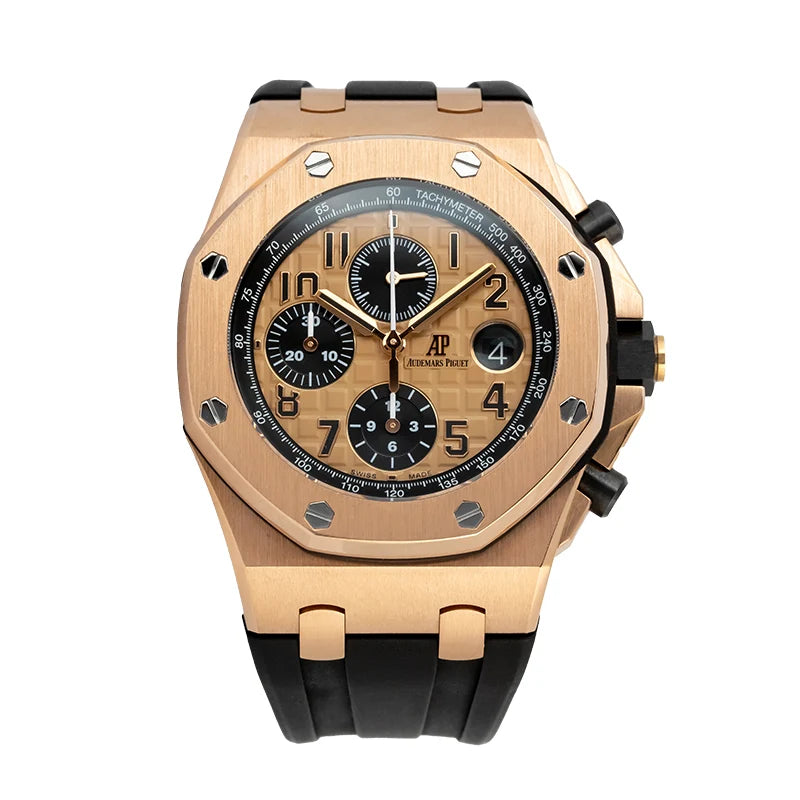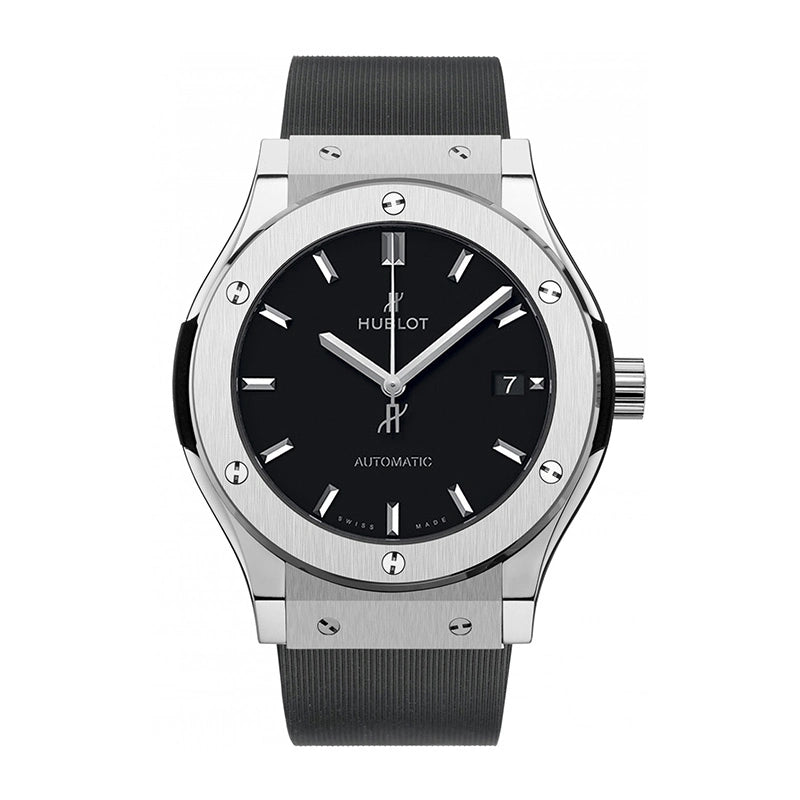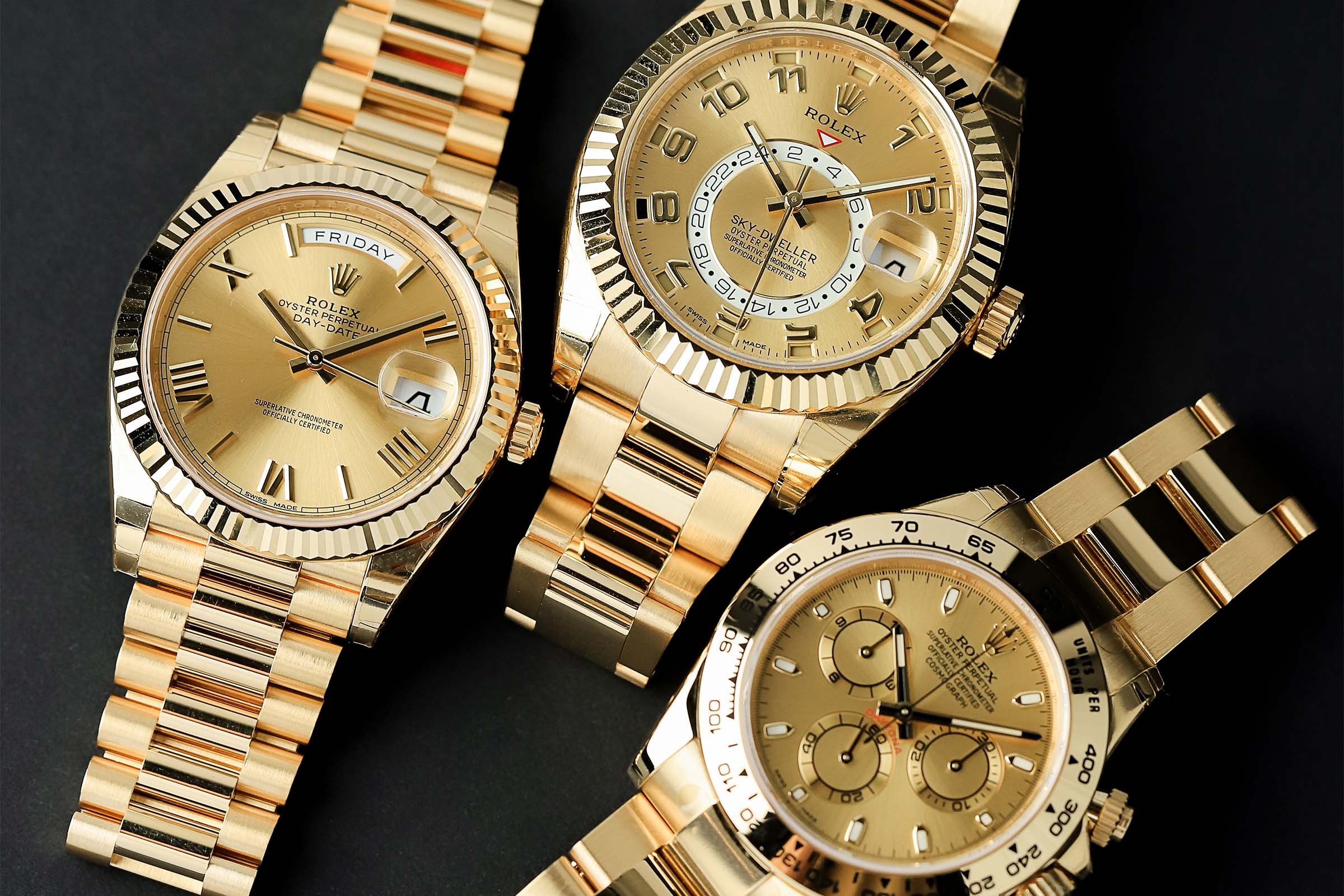Post Contents:
Hublot is one of the most controversial and hated brands in the horological world with the community pondering what the brand has to offer. Hublot has been criticised across the board, with questions being asked surrounding all aspects of the brand, from their origin to their values.
How did Hublot Emerge?
Founded by an Italian called Carlo Crocco in 1980, Hublot was formed with the name taken from the French word porthole, a reference to the bezel shape of the first Hublot model that was produced. To begin with, Hublot was under a watchmaking group called MDM Geneve when they created their first model, the ‘Classic Original’ that stated “MDM Geneve” on the dial.

This model was extremely simple yet fairly revolutionary at the time; Hublot combined a precious metal and comfortable rubber strap, making them the first to do so.
Crocco was a sailor and wanted this watch to be manufactured with the ability to withstand water damage or corrosion. The aim was to create a watch that was versatile; it can be a dress model and have the ability to be worn for sailing and so therefore, Crocco incorporated the rubber strap.

Pairing a precious metal with a rubber strap is a common theme of today, like Rolex’s oysterflex on precious metal Daytona or sky-dwellers, so there is clear influence taken from Hublot’s revelation.

Rolex Daytona 18ct Everose Gold Oysterflex Chocolate Dial 116515LN
- ▪ Sundust or black dial
- ▪Monobloc Cerachrom bezel
- ▪ Automatic Movement Calibre 4130
Most importantly, the two industries of luxury and sports were intertwining more than ever before. Yes, there were luxury sports watches produced before the 1980s, but there was the release of two very influential models in the 1970s.
These two models were the Audemars Piguet Royal Oak Jumbo 5042ST in 1972 and Patek Nautilus 3700 in 1976; now two very reputable models in the horological world. It can be hinted that Hublot’s first ever model took inspiration from these models, in fact it is almost the perfect blend of both.

The case shape was similar to the Patek Nautilus, and screws were incorporated on the bezel, similar to the Audemars Piguet Royal Oak.
Due to the growing popularity of the luxury sports watch market, the ‘Classic Original’ started to gain a demand, making this model a fair hit, establishing Hublot and putting the brand on the market and after its successful launch, Hublot managed to separate from MDM Geneve.
In 2004, watch marketing genius Jean-Claude Biver stepped in and managed Hublot after the brand showed promising signs. Then 4 years later in 2008, luxury goods group LVMH acquired Hublot adding to the luxury watch brands they own like Zenith and Tag Heuer.

What are the reasons surrounding Hublot’s hatred?
Being founded in 1980, Hublot is a very recent brand, this being their 25th-year-anniversary. Due to this, it is important to demonstrate innovation that separates you from other watch brands that hold historical value and highly regarded status.
Brands such as Patek Philippe, Audemars Piguet and Vacheron Constantin consist of high level craftsmanship, serious innovation, respected core values and beautiful history. Hublot, on the other hand, loses out on these aspects.
Hublot’s Origin Story
Firstly, Hublot lacks identity and originality and this idea doesn’t even come from the fact that they are a recent brand, as there have been newer watch brands that are way more innovative than Hublot, like Richard Mille established in 2001.
Many believe the majority of their models look extremely similar to their competition in this industry, which is inferred through the launch of their ‘Classic Original’ that is suggested to have taken inspiration from the first Royal Oak 5042ST and Nautilus 3700.
This can even be indicated today with models such as the Unico Big Bang that looks very similar to a Royal Oak Offshore and the Spirit Of Big Bang having similar features of a Richard Mille.

Additionally, their identity and innovation relies on the idea of pairing a precious metal with a rubber strap which is far from groundbreaking. Since then, they have incorporated complications into their watches like a tourbillon movement.

Audemars Piguet Royal Oak Offshore 42mm Rose Gold Black Rubber Strap 26470OR.OO.A002CR.01
- ▪ Chronograph subdials
- ▪Ceramic pushpieces
- ▪ Automatic Movement
Now, this does not mean Hublot have done nothing to combat this belief, the brand has created some very interesting and innovative watches, one being the LaFerrari Tourbillon MP-05 which is truly an incredible piece that even comes with a self-winding pistol. But this is a minority of Hublot watches with their creations being on the smaller scale of innovation.
Hublot’s Prices
Alternatively, Hublot gains a lot of criticism because their pricing is unjust. Their models are very over priced with many believing that there are better watch brands that create the same, if not, more complicated watches than Hublot for less of the price or at a fair price.
Hublot’s most basic or simple model is Classic Fusion models vary in material and diameter which means the prices of the models also differ, depending on the material and case size. Currently, the cheapest Classic Fusion is a 29mm titanium piece that is retailing for £5,300 and the most expensive is a King Gold Variation, specifically in rose gold with a 45mm case size that is retailing for £23,500.

A 29mm piece is considered a ladies watch but due to the fact that it is made out of titanium paired with a rubber strap is very unconventional, meaning the price tag of £5,300 is hard to understand.

Hublot Classic Fusion 45mm Titanium Black Dial 511.NX.1171.RX
- ▪ Sapphire glass & Sapphire case-back
- ▪Black rubber strap with fold over clasp
- ▪ Automatic Movement
Whilst the 45mm Classic Fusion King Gold’s problem is the overall issue with this model’s pricing; there is nothing crazy about this watch, it simply displays the date. Also, it’s not even full gold as it is paired with a rubber strap, even though Hublot might be paying tribute to their origin, the price should remain questioned.
Hublot’s Aesthetics
Hublot’s designs strike as another part of the brand’s hatred due to unconventional methods and strange creations. They are very oversized with many models being 42mm or over and this is far from the norm due to current cultures and trends, as there have been sightings of people downsizing their watches.
Moreover, models are manufactured in ceramic or carbon fibre which are very unusual materials to use. Understandably, they aim to combine luxury and sports and materials such as ceramic and carbon fibre align with sport but there are luxury brands who combine sport better- Rolex, simply. Ultimately, selling your product for a large amount of money does not mean that it is automatically better than cheaper alternatives that are actually considered better.
Hublot’s Values and Marketing
The final reason and what could be deemed as the main reason is Hublot’s marketing and purpose. The brand idolises the idea of wealth, that there is this lavish picture that aligns with owning a Hublot watch.
For instance, on their social media, the idea of wealth is glorified by depicting a certain lifestyle which alienates watch enthusiasts.
Of course, there are consumers who buy luxury watches because they want to boast wealth and money but watch enthusiasts, those who have a true passion for horology, buy timepieces because of deeper elements such as craftsmanship.
Focusing on the marketing, Hublot is relentless with constant celebrity ambassador celebration models that are titled ‘limited edition.’ Creating limited releases was a good strategy from Hublot because they managed to hold value and increase demand.
But, the brand noticed that this was a success, so they heavily relied on this to the point where almost every release was limited. Now, it is considered pointless because these limited edition models are no longer seen as a rarity. This was a great, short-lived attempt at trying to revamp the brand, why Jean-Claude Biver is known as a watch marketing genius.
Sponsorships are a huge part in every industry and it is no different in the watch world. Brands like Rolex and Richard Mille who combine luxury and sports sponsor competitions like Wimbledon and Formula One, respectively. This is because tennis and racing are considered wealthier sports, therefore it is understandable brand sponsorship because it will lead to consumers.

Hublot has a sponsorship with the Premier League which is difficult to comprehend because football historically is a working class sport, unlike other sports such as golf or tennis. Sponsorships have the aim to increase brand awareness to bring in new customers and gain sales but Hublot considering themselves as a luxury brand with rich values does not blend well with the Premier League whose fans will be of the working class.
Luxury watch brands stay away from endorsing and sponsoring in football as it doesn't align to their values. Also, the majority of those who watch football will not care about owning a luxury watch because it does not align with their personal values, instead they may want to own an affordable watch. So, overall it is a pointless sponsorship.
Can Hublot Gain Respect from Horological Enthusiasts?
There is no denying that there is alienation and distance between the majority of watch fans and Hublot with little interest shown to the brand. At the end of the 2023 year, it was reported that Hublot fell short of the top ten luxury watch brands generating the most turnover, but sitting just outside the ten brands means that Hublot watches are still desirable.
The frustration towards Hublot is justifiable, but that does not mean there is potential for Hublot to gain respect in the horological world, yet they need to do something groundbreaking for that to happen in order to win over enthusiasts.




